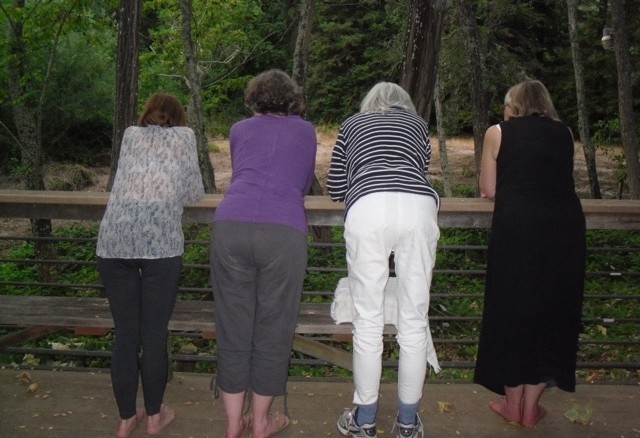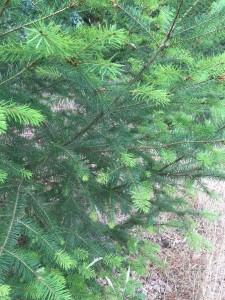Eating Locally
You would have thought I had just brewed a poison tea. Half of my writing group scoffed at the Douglas fir tea that I had just made. I had picked the tender fir tips from several young trees on our walk earlier, committed to having at least one item from the retreat land where our writers’ group meets each month. The house, which we affectionately call Castle Keep, is on the site of an old stagecoach stop, located down a quarter mile driveway. The orchard along this driveway has been abandoned, and much of the 30 acres of the property is overgrown with blackberries, poison oak, a succession of oak trees, and many other of the natives that also grew here when the Pomo camped along the creek. Its main inhabitants are coyotes, deer, and bobcat.
Okay, so one of the teas I brewed last summer caused one of our members to have an allergic reaction. Aren’t we all allergic to something? I can’t even remember what plant I used for that tea. I think it was of the mustard family. But after that, my beloved fellow writers (and most of us have been together 35 years) are suspicious. I try to tell them: it is important to commune with the energy here each time by eating something that grows here. Throughout the spring, there is ample miner’s lettuce for salads. In the summer there is Douglas fir tea and blackberries. In the fall there are numerous apples from the abandoned orchard and lemons from an old tree just east of the house. The winter too offers lemons and other plants for teas. There is always an abundance of nurturance and healing offered by that which grows in the soil where we stay, cultivated and native— both.
I always feel eating local weaves me into the energy of a place, alerts me to who also is there. It sensitives me to the symphonic energies of the Other, synchronizing me to the spot.
But I do accept that not everyone feels this way!
(Check out the recipe: Eat Locally Grown Plants)

